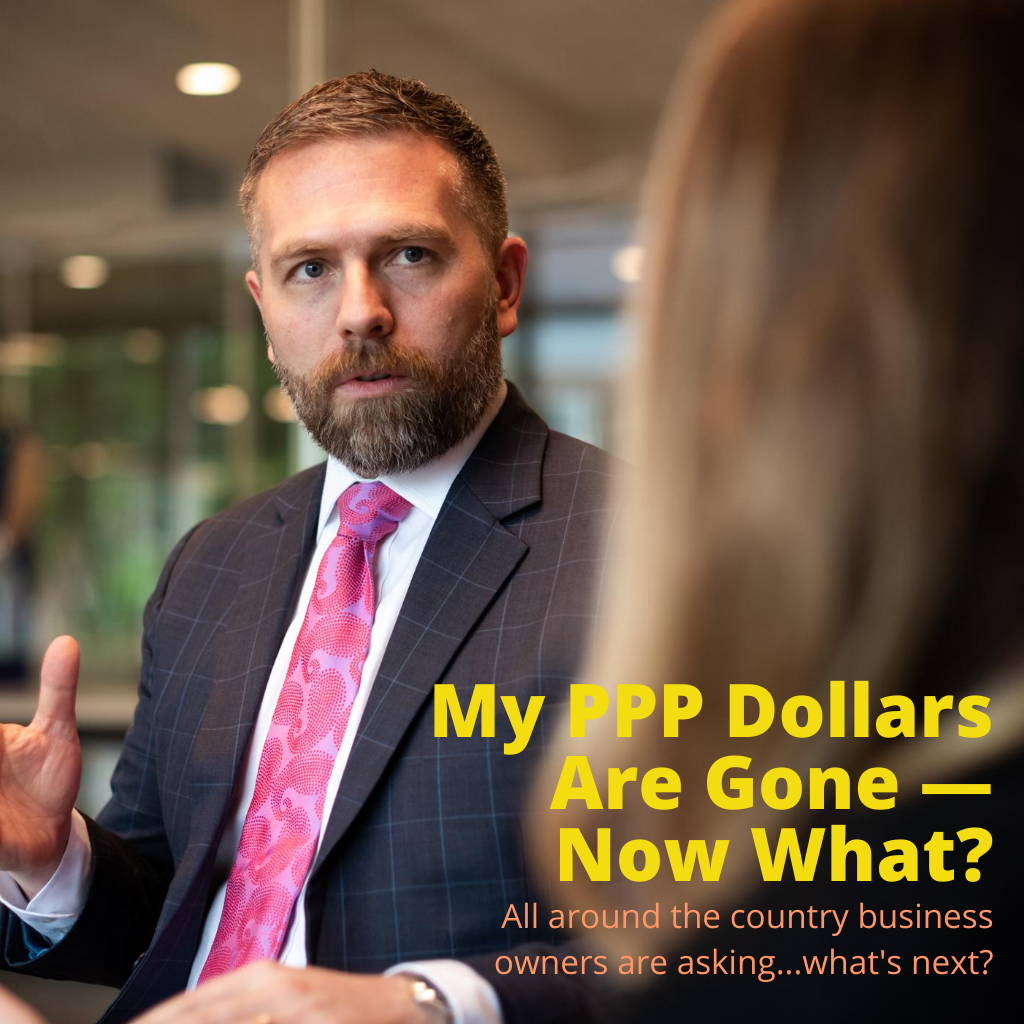
Last week I spoke with a local gym owner/friend I have been in touch with regularly since the crisis began. I could sense her view of the future was changing and I wanted to understand why.
When I spoke to her in late March she had about 4 months of operating cash reserves in a separate business money market account equaling $200,000 and was able to access the various government grant and loan programs early in the cycle – including $150,000 in PPP, $10,000 from DC’s Small Business micro-grant program, and $10,000 from the Economic Injury Disaster assistance fund.
By May she was optimistic about the future, busily deploying a variety of online classes in preparation for physical reopening.
Now, she’s far less optimistic…
Her revenue even under the best scenario has been cut in half because she’s not able to bring the same volume of people into the gym. By the end of July she’ll have burned through all the PPP and grant dollars and by September/October her four months of reserves will be down to next to nothing.
She’s not alone.
Even with June’s employment numbers indicating a modest recovery, on July 1 for example, Open Table showed restaurant bookings down 64.7% year over year, having worsened from a 57% decline on June 27th. And Homebase, a scheduling software provider warned of a “reopening plateau” and that 20% of all small businesses may not survive, according to this recent article in the Washington Post.
All over the country business owners are asking — my PPP dollars are nearly gone, now what?
I discussed with her a practical way to think through the ramifications of all of this and orient her to a plan to survive this year and I thought I’d share some ideas all small business owners can use as they finish spending their remaining PPP dollars.
Start with asking, very conservatively, how much revenue do you have coming for the rest of the year? Then average it out and turn it into a monthly number because most of our bills are due and payable monthly and it’s easier to see what you need to do next.
Here’s what that looks like…
What’s so special about 40?
Allocating 40% of your revenue toward business expenses (marketing, rent, insurance, etc.) tends to work well for service businesses and still leaves you money for other things such as your salary, commissions to salespeople, and taxes.
Can you fit all of your expenses into no more than 40% of your monthly revenue?
If not, this might elevate a key question and that is, does my business model actually still work and produce a profit?
If not, what can you do about it?
What changes can be made?
If you are able to manage your business expenses to no more than 40% of revenue, congratulations, you have a shot at making it.
Your work isn’t done quite yet, though.
Now it’s time to tackle longer-term contracts which might include things such as leases, vendor and employee contracts. Don’t expect another government parachute this fall. Fix the longer-term structural expenses now and work toward building 12 months of cash reserves.
Building cash reserves in a constricted economic environment is often about debt and payables management. Assuming you still have some revenue coming in, I recommend pushing as many payments into the future as you can and take that cash and put it into a reserve account. Most creditors are happy to get almost anything at this point so push those obligations out as far as possible and store your cash.
Will this create some other problems? Yes, though right now managing and increasing cash is the biggest priority.
Surviving — Then Thriving
I’m confident my gym owner friend is going to make it. She’s adapting quickly, has completely let go of past expectations for this year, and realizes in the gym business, surviving is the big win in 2020 in part because many of her competitors will not, leaving her in a stronger position when this is all over. This is what we experienced in our real estate business in 2008 when many of our competitors were slow to accept and adapt to the reality of the market. That allowed us more room to play offense and we eventually took enough market share to be #1 in the market 5 years later.
Like her business, your business can survive this cycle too if you take aggressive and rapid action now and have a plan to adjust your business model as our world continues to live in this period of rapid change. It helps to consider this period of time to be your greatest gift. Those of us who made it through the 2008 crisis know surviving that became our greatest asset. While we were toiling away to survive, we didn’t realize how many seeds we were actually planting for the future by working so hard on our businesses in the present.
Remember as much as 2020 is about surviving, it’s also about thriving in 2021 and beyond.
As Warren Buffett says, “Someone’s sitting in the shade today because someone planted a tree a long time ago.”


